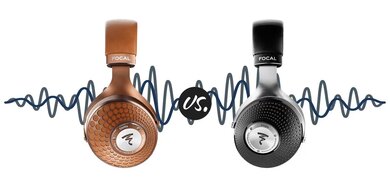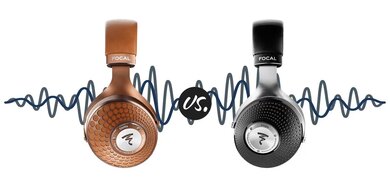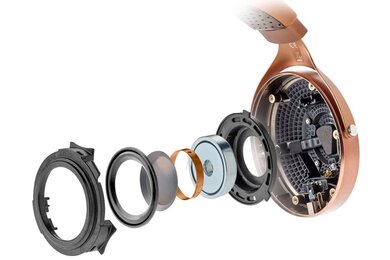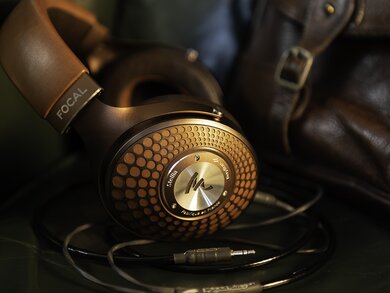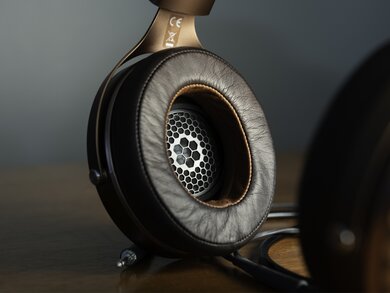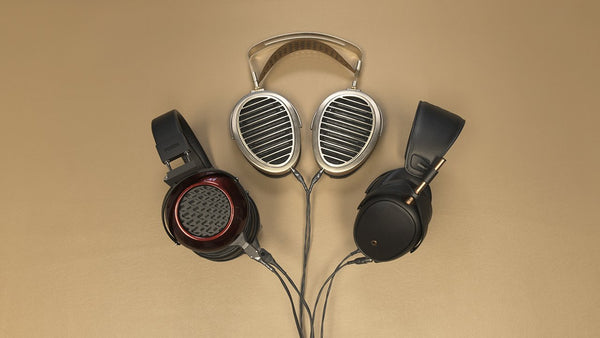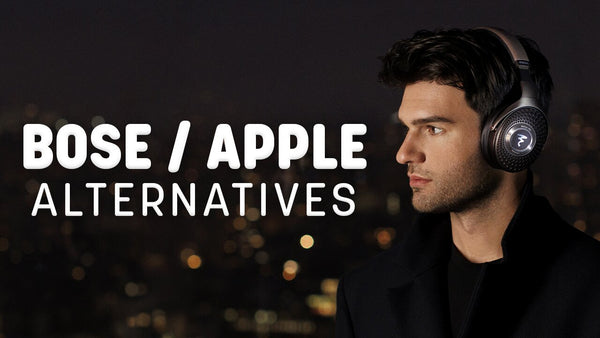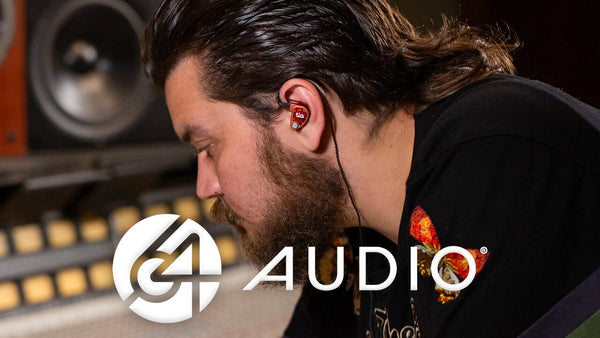Focal Stellia Headphones Review: A New Standard in Reference Listening For Audiophiles

Indulge in the Sonic Fidelity of Focal's New Reference Closed-Back Headphone
In 2017, Focal paid a visit to Moon Audio to introduce the pre-production units of the Utopia and the Elear open-back headphones. During their visit, Sanjay Sharma and Romain Vet asked my opinion on what should be the next headphone for the French speaker manufacturer. I immediately told them that if they could produce a reference closed-back headphone, they would dominate the headphone market. After all, there had not been a true reference closed-back since the Sony MDR-R10, and that headphone goes back to 1989.
Of course, there have been some good closed-back headphones over the years, but none has achieved the legendary status of the MDR-R10. I told Sanjay and Romain that that should be their goal for Focal.
Now, I don't have a Sony MDR-R10 headphone in my collection, as its high-end price tag puts it out of reach for the commoner. I can't do a comparison at the moment to see how the Focal Stellia Headphones stacks up against the audiophile legend, but I have high hopes. I paired the Stellia with my Chord DAVE DAC/amplifier and let the magic begin!
Focal Stellia Headphone Comparison
An Upgrade Over the Focal Elegia
I would imagine Focal used their first closed-back headphone, the Elegia, as a testing point for launching the Stellia. The Elegia is a good, balanced closed-back headphone, but it did not meet my expectations in terms of what I was looking for in a reference closed-back headphone. Don't get me wrong, it's a great headphone for $899. But since I am not limited to closed-back headphones, I prefer the Focal Clear over the Elegia. (Note: Focal discontinued the Elegia in 2020.)
The Elegia does not have the top-end or low-end energy of the Clear. It is balanced, yet it does not grab my ears the way the Clear does. The Elegia is priced very well at $899 and has created many happy customers for us, but personally, I need more from a reference headphone.
The Stellia gave me more of what I'm looking for when it comes to sound quality in a closed-back reference headphone:
- More bass than the Elegia
- More upper-level detail than the Elegia
- It's smoother yet has the analytical detail similar to the Utopia
- Beryllium! The pure beryllium dome in the Stellia is what makes the difference
I didn't like the sound of beryllium in the early days of Focal speaker technology, but since picking up the Sopra 2 speakers in the showroom, I am a convert. The beryllium is no longer bright and it doesn't ring like the early inverted tweeters did to my ears.
I'm sure the Stellia's looks will get mixed reviews, but they are among the most beautiful headphones I have ever seen. I love the cognac and mocha finishes. I thought the Elegia look and design was fantastic, but the Stellia takes it up a notch with its elegance. The bronze finish and brown leather headband lend a luxurious look that contrasts to Focal's standard black collection. I am really loving the Stellia.
Is the Stellia a Closed-Back Utopia? Yes. Utopia? No. Let Me Explain
Both the Stellia and the Utopia utilize Focal's full-range 40mm driver with pure beryllium dome. This provides a much more detailed sound than Focal's magnesium driver headphones, making both the Stellia and the Utopia great for listeners who live for critical listening.
The tonality of the Stellia and the Utopia is very similar, especially on the top and bottom ends. Both headphones have a detailed, energetic, and forward sound, but I would not describe it as bright. But that doesn't mean these headphones' sound (or build) is identical.
The tuning on the Stellia is slightly more relaxed than the Utopia, and the Utopia has slightly more bass to my ears. They are both highly clear and transparent headphones, but the Utopia takes the cake there.
Soundstage Is Taller Than It Is Wide
Another difference is in soundstage. To me, the Stellia sound is closer to the ear versus the Utopia, meaning you get a more intimate soundstage. It's not very wide, but I think the Stellia has a taller soundstage, both front to back and top to bottom, than the Utopia. With the Utopia, the sound is thrown out farther from the head away from your ears, providing a wider soundstage.
While the Utopia features a carbon fiber yoke, the yoke on the Stellia is solid aluminum, most likely so they could match the bronze anodizing of all the metal parts. The Stellia continues with the 3.5mm cable connection on the cups. I wish they had used the Utopia connector, but I understand the change as the 3.5mm is becoming more common in the marketplace and it gives you the ability to use your upgrade cables with more headphones in your collection.
Driver Design & Build Quality
The Stellia features Focal's signature 40mm M-shaped dome. The dome is pure beryllium, which has a low mass, high rigidity, and high damping. A cross-section of the diaphragm resembles the letter M; Focal says this design adds exceptional rigidity without additional weight for more precision and less distortion. The frameless, pure copper voice coil reduces mass even further. The reduced mass is what helps the headphone reproduce the tiniest nuances with great precision. A new 110-micron NBR surround is even stiffer, which helps to deal with the forces happening in a closed-back enclosure.
The Stellia boasts a frequency response from 5Hz to 40kHz (±3 dB) with a THD of 0.1% @ 1 kHz/100 dB SPL and a sensitivity of 106 dB SPL/1 mW @ 1 kHz. The low impedance of 35 Ohms makes the Stellia relatively easy to drive, including from portable audio sources.
The grill on the ear cups is stainless steel and has a spiral pattern of small- to larger holes. This grill is actually placed over the same leather that is used on the headband, which is a full-grain leather called cuir pleine fleur. No cheap pleather here! This leather is soft and comfortable and very similar to the lambskin leather ear pads used by Ultrasone, which I have always loved.
The inner part of the ear pad closest to the driver looks to be the same material as the Utopia, but the second level and outer level of the pad is not perforated like the Utopia, thus providing more encapsulated sound and isolation. The memory foam I would imagine is the same in the innards.
The inner cup uses the same pyramid-style diffusion technique as the Elegia to deal with standing back waves. The rigidity reduces resonance and standing waves. I noticed that the sound is not as deep as when listening to the Utopia, yet the sound field is taller both up and down when compared to the Utopia. I would imagine that this has to do with the pyramid acoustical back wall of the cup throwing the sound in these directions, thus creating a taller sound and a larger field both to the front and to the back of the head.
Like the Elegia, the Stellia incorporates a dampening system on the rear venting port of the driver. This can be seen by the small mesh opening on the center of the cup under the Focal flame symbol. This releases the energy of the driver to compensate for the frontal movement in the closed volume of the cup. It helps produce a larger Xmax or excursion, resulting in a more controlled bass response. And because the port is filtered and small, there is very little sound leakage. While the Utopia is an open-back design, basically an infinite baffle design, the back of the driver is also vented, but with a much larger opening.
Comparisons
Comparison to the Focal Celestee and Focal Radiance
Note: Updated June 2021. Focal released two new closed-back headphones since the writing of this review: The limited-edition Focal Radiance and the Celestee. Both have Focal's aluminum-magnesium driver. These materials lend a warmer, more relaxed sound than the beryllium in the Stellia. The Radiance is the warmer of the two headphones, while the Celestee is more neutral-warm. Now, each of these headphones uses a re-tuned version of the driver that was in the Elegia. The re-tuning has given both of these new headphones better bass response. And the Celestee takes design cues from the Stellia, making these two headphones visually stand out in the Focal headphone lineup. But the Stellia is the hands-down winner when it comes to detail and dynamics -- as well it should with its flagship status.

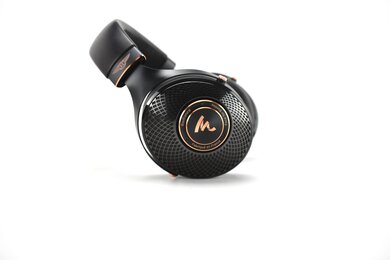
Comparison to the Fostex TH900 mk2 and the Sony MDR-Z1R Closed-Back Headphones
The Fostex TH900 mk2 is one of my all-time favorite "bang for the buck" closed-back headphones. They are non-fatiguing to listen to for hours on end and they are super comfortable. I recommend TH900 mk2 to mastering studios all the time. While the frequency curve isn't perfectly linear, I do say that it is somewhat linear from top to bottom in terms of presentation and sound signature. Overall, though, I prefer the tonality of the Stellia.
The Sony MDR-Z1R has a V-shaped sound, which makes it "funner" sounding than the Stellia. I like this headphone primarily for dance music like EDM, trance, etc. It's more detailed and has more bottom-end weight than the Stellia. But is it as true to the music as the Stellia? No. I like the Stellia better.
Dragon Audio Cables
A pair of headphones as fine as the Stellia begs for a cable upgrade to help it realize the very best of its potential. So, which Dragon Cable do I like to pair with the Stellia? Well, like the Utopia, the Stellia's beryllium driver can benefit from a smooth-sounding cable. I don't mean warm and lush, but something that will maintain the detail and dynamic speed while providing musicality. Thus, the Black Dragon Premium headphone cable is my cable of choice for both the Utopia and the Stellia.
UP-OCC copper conductors in the Black Dragon impart a musical tonality and a fuller sound presentation with more weight. You get smoothed-out treble without any loss of clarity. If you're wondering whether the Black Dragon will make your headphones sound overly warm and lush, the answer is no. It's more about adding weight and dimension to your music.
Unless you have a pretty warm tube amp driving the Stellia or Utopia, I don't feel the Silver Dragon would be the right pairing unless you want hyper detail. A 2A3 or 300B amp might benefit from the Silver Dragon; otherwise, the Black Dragon is your best bet.
Verdict
The short and skinny of my review is if you like the Utopia, but you want a closed-back high-end headphone, look no further than the Focal Stellia.
It's one of the best closed-back headphones I have heard, and one of my favorite headphones for classical, jazz, and any other music that demands a smooth, detailed, natural-sounding headphone.
It's easy enough to drive that you can take it on the go, and the closed-back design makes it a great option for use in an office where there's a lot of noise around you. The Stellia is a worthy addition to the Focal line and to the world of hi-fi headphones, and may just be your new end-game closed-back. Indulge in the sonic fidelity of the Focal Stellia and pair it with our Black Dragon Premium Headphone Cable for an even better listening experience. Made with high-quality materials, the Black Dragon's UP-OCC Copper conductors add warmth and bottom-end weight to the Stellia. Please let us know if you have any questions we can answer, and happy listening!
Featured Products
Related Videos
Focal Stellia Headphones | Need to Know
Focal Stellia Headphone Comparison
Best Headphone Cables for Focal Headphones
What's in the Box
Specifications
Type: Circum-aural closed-back headphones
Cushions: 20mm memory foam
Yoke: Solid aluminum
Weight: 0.96 lb (435g)
Sensitivity: 106dB SPL / 1mW @ 1kHz THD
Loudspeaker: 1.6" (40mm) pure Beryllium "M" shaped dome
Frequency Range: 5Hz-40kHz
Impedance: 35 Ohms

